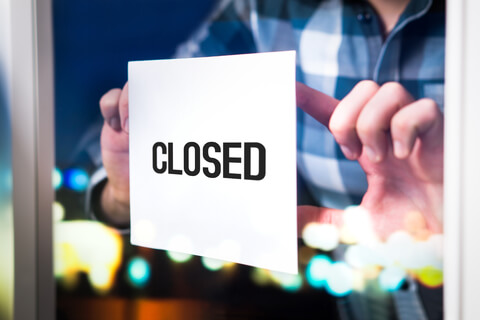Introduction
I believe it is really important for leaders to fully understand the trading environment their organisation operates in to compete profitably. Leaders must be able to read the market and identify the risks and opportunities that exist, so they can define winning strategies.
Let me apply this argument to one sector in particular, retail.
The changing face of retail
Given our changing shopping habits, it’s no surprise that e-commerce is the fastest growth market in retail, forecasted to grow by 55% in the next five years. And according to the Center for Retail Research, the UK leads the way globally, with online sales accounting for around 17% of all retail sales.
Of course, Black Friday and Cyber Monday have given this a boost. But they have also started to change people’s perception of what is good value, encouraging people to ‘shop around’.
In this changing climate many long-standing retailers have collapsed, Toys “R” Us, Maplin, Austin Reed and East are recent casualties and others like Marks & Spencer and Dixons Carphone are reducing outlets.
Of course, some areas of retail are doing well. Sainsbury’s had its best Christmas on record in 2017 and John Lewis said sales jumped 8.9% in three major categories: fashion, electrical and homeware.
So what is the recipe for success?
Reading the analysis on why certain brands have collapsed and others succeeded, it comes back to the same thing: leadership and its ability to understand the market well enough to get the mix of product, price and service right.
In the case of Toys “R” Us, the range wasn’t in line with what children coveted, and the shopping experience and prices weren’t keeping up with Amazon, supermarkets or Hamleys. The out of town warehouse model became out dated, expensive and irrelevant. The company had failed to keep up.
Maplin was also competing against Amazon, but also non-traditional competitors like John Lewis, which selects electronics that come with a price promise. John Lewis is also known for its impeccable customer service in store and online, coupled with flexible delivery and collection options.
These case studies highlight how valuable business acumen is to success. Retailers need teams of commercially astute leaders who are capable of understanding how the latest fashion and innovation in product lines and shopping experiences will sway the public, and how overall consumer confidence indexes and competitor strategy will affect their own strategy and performance.
But more than that they must be adept at understanding when external influences demand a change in approach or a steadfast nerve to continue on the chosen path.
The link between customer experience and commercial awareness must strengthen.
Cyber Monday underlines this. Retailers have to anticipate the prices competitors will set, the products they are likely to discount, and then use commercial agility to calculate the impact these scenarios could have on their own profit. They must then use this insight to determine the deals they need to offer, or they may even decide not to take part at all.
However, this form of ‘commercial savvy’ is not just critical for those traditionally tasked with buying and negotiation, it’s a must for all customer-facing staff.
In stores, every customer-facing member of the team has to know how their products and prices compare so customers get great advice and service when weighing up whether to give you their hard earned cash.
Store teams must also know what they can do to get a customer over the line – which products have some negotiation room? What’s the profitable cross-sell? And they must be able to make the judgement in real-time. I believe all retailers need to be investing in this core sales skill to survive.
Service and customer experience cannot be underestimated today. If a customer has made it to a store they have to be ‘wowed’ enough to make the purchase there and then, or, if they are browsing with a view to going online to buy it, be convinced enough to go to the brand’s online store and not a competitor’s. Leaders have to be sure their teams have the skills to build brand loyalty from the interactions they have with customers.
I’m sure this will become even more important as the uncertainty of Brexit further takes hold. Boardrooms therefore need to be asking themselves if they have a core of commercial acumen running through their business that can navigate the changing and complex environment, and the service models to support it, otherwise I fear we will see more high street casualties.
To learn more about why business acumen is important, read our whitepaper Business Acumen: The Key to Competitive Advantage in Uncertain Times or watch our 2-minute video to find out how we can help your employees develop commercial awareness.

